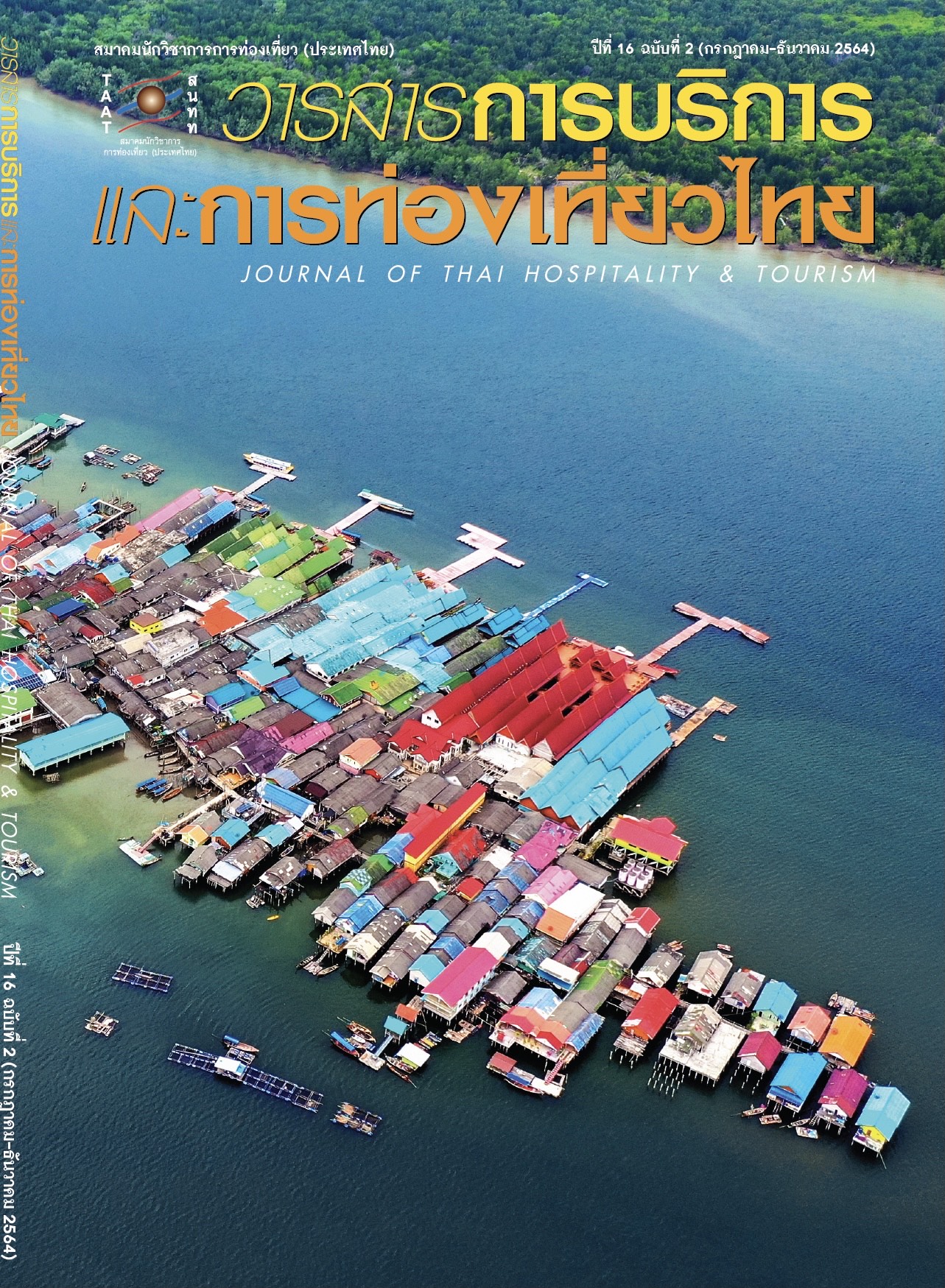Tourism Pattern along the Andaman Sea, on the Coast of Thailand Consistent with Tourists’ Behavior and Needs
Main Article Content
Abstract
This research aimed to study the tourism pattern along the Andaman Sea, on the coast of Thailand to see if it was consistent with tourists’ behavior and needs. Of the samples were collected, a total of 400 were Thai and foreign tourists who came to the area. The data were analyzed by using descriptive statistics.
The study found that most of the samples were male, age between 25 and 34 years, have single in status, were graduated and had attained bachelor’s degree, were Christian, live in Europe, work in a private company, earn more than 90,000 baht per month, listed one of their hobbies as travel, got information about the tourism from the internet and managed to travel by themselves, travel in the area for the first time for the purpose of recreation, attracted by travel incentives, had two traveling companions who were family members or relatives. Further data revealed that the most interesting goods in the area were food, the most activities that interested in participating in, was a cruise to visit the island, the average time to travel in the area was between 2–5 days per visit while the average spending per time visit was over than 15,000 baht per person Data also revealed that the tourists would be willing to return to visit Andaman coast if they have the opportunity. The most popular tourist attraction in the Andaman coast of Thailand was a natural attraction, followed by food, fruit, culture, friendship, diving, swimming, sunbathing, tourism activities, market, shopping and etc. The tourism patterns along the Andaman sea coast of Thailand consistent with tourists’ behavior and their needs were sorted into different categories such as beach tourism, food tourism, cultural tourism, adventure tourism, spa and wellness tourism, cruise tourism, marine ecotourism, shopping tourism, and sports tourism respectively.
Article Details
References
Airports of Thailand Public Company Limited. (2009). Travel Statistics on Transportation Networks in the Southern Andaman Coastline. Retrieved from http://www.osmsouth-w.moi.go.th/file-data/789554.doc
Chantraprayoon, O. (2012). Tourism Behavior. Faculty of Tourism Development, Maejo University.
Cook, T. (2010). Indian Travel and Tourism Industry. Retrieved from http://www.dnb.co.in/travel_tourism/indian_travel_and_tourism_industry.asp
Department of National Park, Wildlife and Plant Conservation. (2016). The Number of Tourists Entering the National Parks for the Fiscal Year 2015. Retrieved from http://www.dnp.go.th/NPRD/develop/data/stat58/fthai_58.pdf
Jansomwong, N. (2015). Tourism Development Action Plan within the Andaman Tourism Development Zone 2016 – 2020. Phuket: Tourism Development Committee Regularly for the Andaman Tourism Development Zone.
Madhayamapurush, W. (2018). Structure of Tourism System. Journal of Thai Hospitality and Tourism, 14(1), 94–102.
Meejinda, P. (2009). Loyalty of Thai and Foreign Tourists towards Tourist Attractions in Chiang Mai and Phuket. Retrieved from http://elibrary.trf.or.th/project_content.asp?PJID=MRG4980203.
Ministry of Tourism and Sports. (2015). Thailand Tourism Strategy 2015 – 2017. Bangkok: Ministry of Tourism and Sports.
Ministry of Tourism and Sports. (2016). Thailand Tourism Economic Report. Bangkok: Ministry of Tourism and Sports.
Piw-on, A. (2012). Tourist Behavior. Maha Sarakham: Maha Sarakham Vocational College.
Sophonsiri, S. (2011). Tourist Behavior Analysis. Bangkok: Inthanin Press.
Yamane, T. (1967). Statistics: An Introductory Analysis. New York: Harper and Row.


